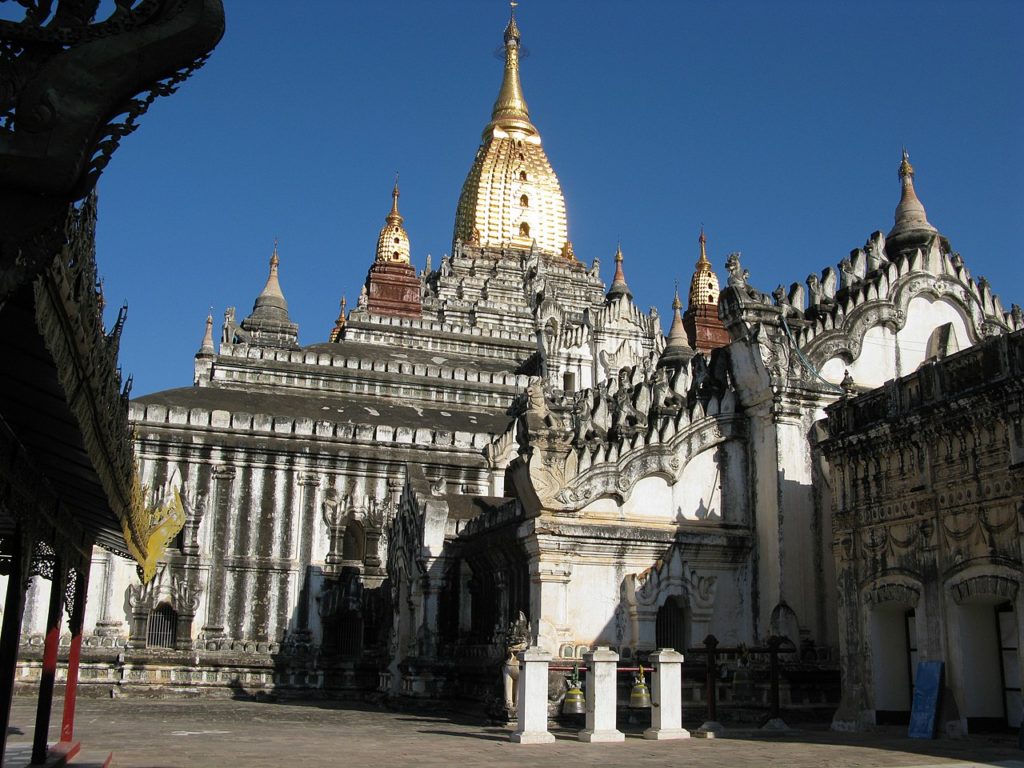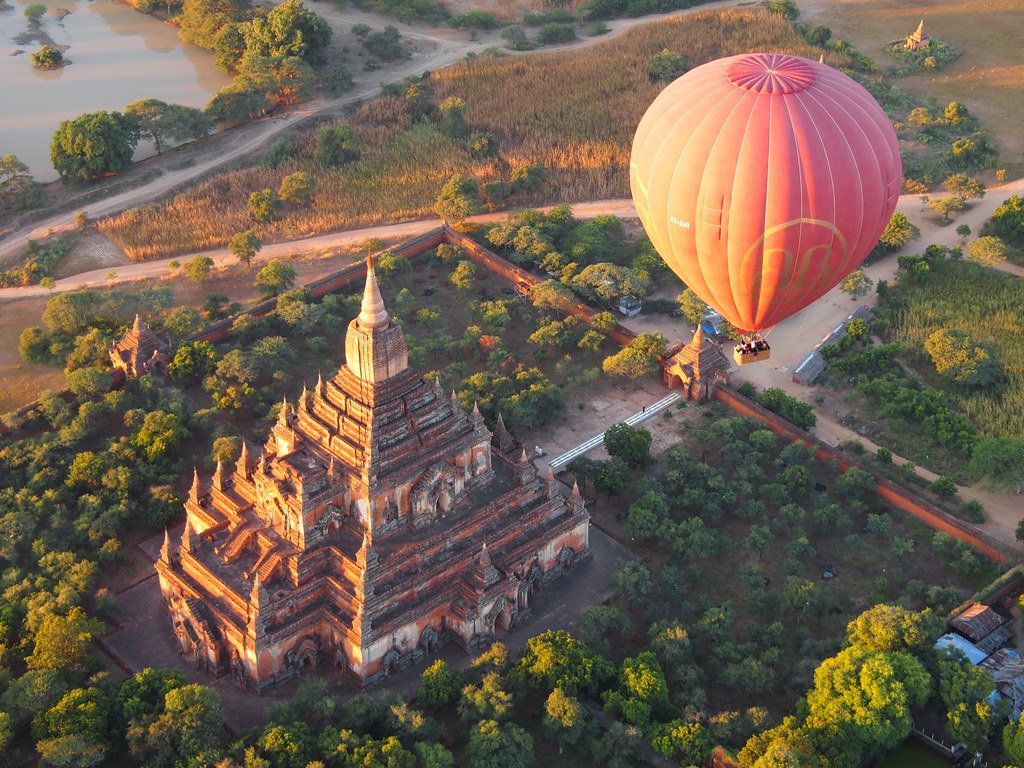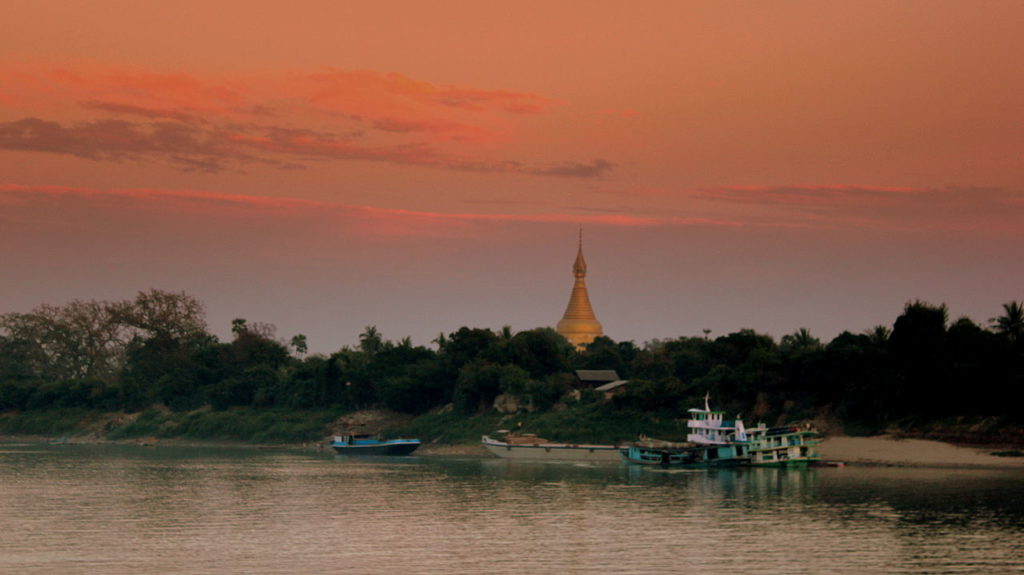Modern tourists regard the remaining temples of Bagan as equal to the Angkor Archaeological Park in Cambodia; in 2019, Bagan pulled alongside its Cambodian rival with its overdue recognition as a UNESCO World Heritage Site.
UNESCO recognition or not, Bagan certainly belongs in any Myanmar itinerary worth mentioning, and indeed many travelers make sure to cover Bagan when exploring greater Southeast Asia. Make the most of your Bagan visit by taking on one of the adventures listed here.
1. Explore the Temple Plain
Bagan still has over 2,000 temples remaining, down from 10,000-plus in its glory days.
Bagan residents built the stupas that litter the temple plain as acts of merit; at the height of the Pagan Kingdom, even the middle classes made their own stupas, though none were to rival the ones commissioned by Bagan kings.
 Most of Bagan’s temples can be found within the Bagan Archaeological Zone; a ticket costing MMK 25,000 (US$15.67) must be purchased before entering the Zone. Luckily, you don’t have to see all of the 2,000 temples to get the whole Bagan experience. If pressed for time, you can visit these must-see temples in the space of two days.
Most of Bagan’s temples can be found within the Bagan Archaeological Zone; a ticket costing MMK 25,000 (US$15.67) must be purchased before entering the Zone. Luckily, you don’t have to see all of the 2,000 temples to get the whole Bagan experience. If pressed for time, you can visit these must-see temples in the space of two days.
As the temples are active Buddhist places of worship, visitors must pay proper respect before entering—footwear must be removed (no exceptions!), modest clothes worn, and proper behavior followed. Read about Buddhist temple dos and don’t’s for a more detailed look at the rules.
2. Fly in a Hot-Air Balloon Over Bagan
Bagan’s temples are best viewed from a high vantage point, and there’s no higher (or more jaw-droppingly gorgeous) perspective than the one you’ll get from a hot air balloon gliding 2,000 feet in the air.
 Unlike helicopter and ultralight flights, balloon flights are relatively silent and static, combining with the reddish angled light of the sunrise to create the best conditions for viewing Bagan’s temple plain. If you’ve got the cash to spare (flight rates cost between $300 to $500 per person, read about money in Myanmar), and if you’re visiting during the short ballooning season (from October to mid-April), put balloon flying over Bagan on your must-do list.
Unlike helicopter and ultralight flights, balloon flights are relatively silent and static, combining with the reddish angled light of the sunrise to create the best conditions for viewing Bagan’s temple plain. If you’ve got the cash to spare (flight rates cost between $300 to $500 per person, read about money in Myanmar), and if you’re visiting during the short ballooning season (from October to mid-April), put balloon flying over Bagan on your must-do list.
Three companies provide ballooning services over Bagan: Golden Eagle Ballooning, Oriental Ballooning, and the company that started it all, Balloons Over Bagan. Flights can last between 45 minutes to an hour, not including the pre-dawn pickup from your hotel.
3. Watch the Sun Set Over the Irrawaddy River
If balloon flights are beyond the reach of your budget, you can still climb on a dwindling number of multi-tiered temples to see Bagan’s gorgeous sunsets reflecting off the Irrawaddy River in the distance.
 Before tourism became a major Bagan concern, most temples permitted visitors to climb to their upper decks. But after increased tourist traffic and not a few accidents marred the temple-climbing experience, the government has cracked down: visitors may only climb five temples in Bagan, and additional closures can be announced without notice.
Before tourism became a major Bagan concern, most temples permitted visitors to climb to their upper decks. But after increased tourist traffic and not a few accidents marred the temple-climbing experience, the government has cracked down: visitors may only climb five temples in Bagan, and additional closures can be announced without notice.
Two temples alongside the Irrawaddy River will never be affected by these closures, as they lack tiers to climb, thus making them excellent (and much safer) candidates for sunset viewing. If you’re mobility-challenged, lack travel insurance, or prefer riverside views, head off to the gourd-shaped Bupaya Pagoda and the sacred Lawkananda Pagoda for your sunset fix.
4. Shop for High-Quality Lacquerware
Lacquerware feels like it belongs to the past—non-microwave-safe, hand-carved, and crafted using traditional materials and centuries-old formulas. But like many ancient crafts, lacquer has a beauty that few modern equivalents can reproduce.
 The town of Myinkaba near Bagan has been a center for lacquer production for centuries, having been introduced by Siamese and Lanna emigres in the 1500s. The present-day lacquer workshops use techniques little changed from their ancestors’ time—from curing lacquerware in underground cellars to hand-carving designs into the lacquer with styluses.
The town of Myinkaba near Bagan has been a center for lacquer production for centuries, having been introduced by Siamese and Lanna emigres in the 1500s. The present-day lacquer workshops use techniques little changed from their ancestors’ time—from curing lacquerware in underground cellars to hand-carving designs into the lacquer with styluses.
Unlike other handicrafts, lacquerware improves with age: colors brighten as the years go on, making antique lacquerware particularly prized by collectors. Bagan lacquer artisans favor black, yellow, green, and red colors in their products, seen all over the jewelry boxes, coasters, cups, and jars sold in shops all up and down Myinkaba’s main drag.
5. Attend Bagan’s Biggest Festival
The biggest festival in Bagan takes place in January, on a moveable feast day that coincides with the Burmese Pyatho month’s full moon and the harvest season’s end. In the weeks leading up to Ananda Festival, the locality around its namesake temple fills up with bullock carts bringing pilgrims and their offerings.
 Locals set up a fairground in a place of honor near the temple, hawking traditional Myanmar food and other diversions for visitors.
Locals set up a fairground in a place of honor near the temple, hawking traditional Myanmar food and other diversions for visitors.
The festival gives Burmese Buddhists the chance to earn merit by providing donations of food and clothing to the local community of monks, who line up by the hundreds near the Ananda Temple to receive the offerings supplied by grateful locals.
According to tripsavvy.com













